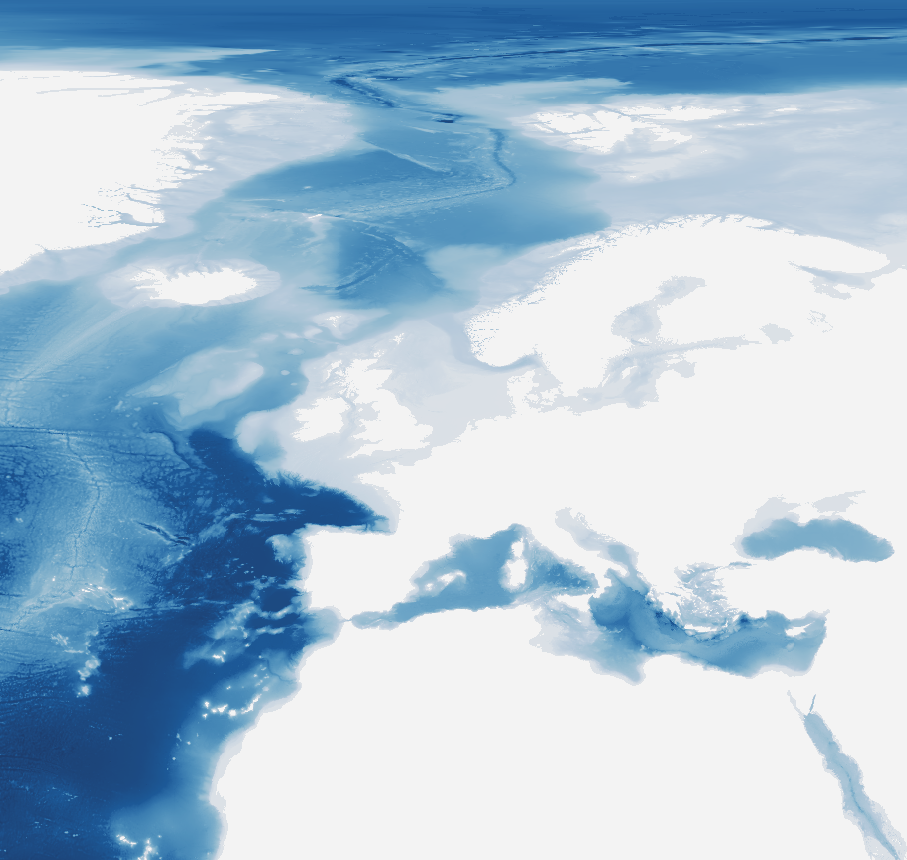EMODnet 2018 Bathymetry
EMODnet maintains a number of bathymetry (sea floor depth) datasets.
There are currently two datasets with full coverage of Europe: a 1/8 arc minute (~200m) version released in 2016, and a 1/16 arc minute (~100m) version released in 2018. The datasets are a composite of bathymetric surveys, Landsat 8 imagery, and GEBCO data.
The vertical datum used is Lowest Astronomical Tide.
Coverage
The 2018 dataset covers a large area around Europe: 15° to 90° latitude, and -36° to 43° longitude. The elevation over land areas is given as NODATA values.

Render of EMODnet 2018 sea floor depth.
Adding EMODnet 2018 Bathymetry to Open Topo Data
Make a new folder for the dataset:
Download the files from EMODnet into ./data/emod2018. You want the 2018 dataset, in ESRI ASCII format. Extract the zip folders, you should have 59 .asc named like A1_2018.asc.
Unlike other datasets, the EMOD tiles aren't aligned on a nice whole-number grid, so Open Topo Data can't tell from the filenames which tile covers which area. To handle this we can build a https://gdal.org/drivers/raster/vrt.html - a single raster file that links to the 59 tiles and which Open Topo Data can treat as a single-file dataset. Unfortunately you'll need to install GDAL for this.
Create a new folder for the VRT:
Build the vrt using relative paths so the file will work inside the docker image:
Create a config.yaml file, pointing to the VRT folder:
Rebuild to enable the new dataset at localhost:5000/v1/emod2018.
Extra performance
.asc files take up a lot of disk space and are slow for random reads. Consider converting to a compressed geotiff:
Public API
The Open Topo Data public API lets you query NED 10m for free:
{
"results": [
{
"elevation": -81.94999694824219,
"location": {
"lat": 55.884323,
"lng": 2.528276
},
"dataset": "emod2018"
}
],
"status": "OK"
}
The public API uses the 2018 version of the dataset.
Attribution
EMODnet Bathymetry Consortium (2018): EMODnet Digital Bathymetry (DTM).